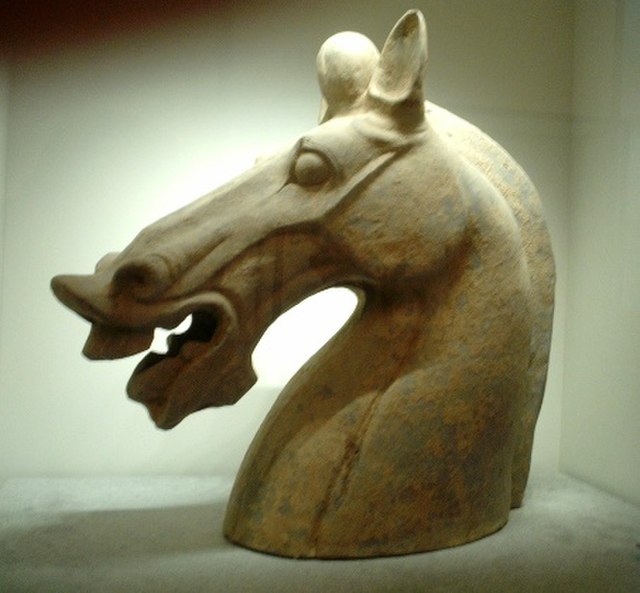Loulan, also known as Kroraïna (Krorayina) in native Gandhari documents or Krorän in later Uyghur, was an ancient kingdom based around an important oasis city along the Silk Road already known in the 2nd century BCE on the northeastern edge of the Lop Desert. The term Loulan is the Chinese transcription of the native name Kroraïna and is used to refer to the city near Lop Nur as well as the kingdom.
A carved wooden beam from Loulan in the British Museum, 3rd–4th century. The patterns show influences from ancient western civilizations.
Sichuan brocade fragment uncovered in Loulan Kingdom
Oxhide boots from Loulan. Former Han dynasty 220 BCE-8 CE.
Loulan tomb mural, 220–420 CE. Loulan Museum
The Silk Road was a network of Eurasian trade routes active from the second century BCE until the mid-15th century. Spanning over 6,400 kilometers, it played a central role in facilitating economic, cultural, political, and religious interactions between the East and West. The name "Silk Road," first coined in the late 19th century, has fallen into disuse among some modern historians in favor of Silk Routes, on the grounds that it more accurately describes the intricate web of land and sea routes connecting Central, East, South, Southeast, and West Asia as well as East Africa and Southern Europe.
Woven silk textile from Tomb No. 1 at Mawangdui, Changsha, Hunan province, China, dated to the Western Han Era, 2nd century BCE
Chinese jade and steatite plaques, in the Scythian-style animal art of the steppes. 4th–3rd century BCE. British Museum.
Soldier with a centaur in the Sampul tapestry, wool wall hanging, 3rd–2nd century BCE, Xinjiang Museum, Urumqi, Xinjiang, China.
A ceramic horse head and neck (broken from the body), from the Chinese Eastern Han dynasty (1st–2nd century CE)








